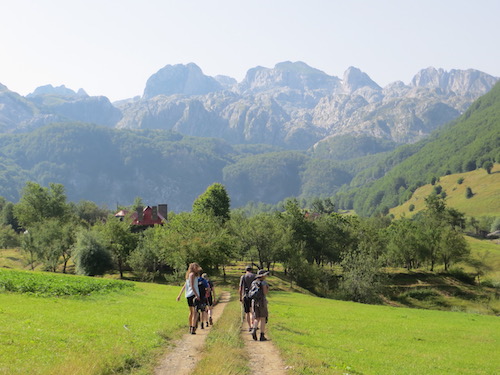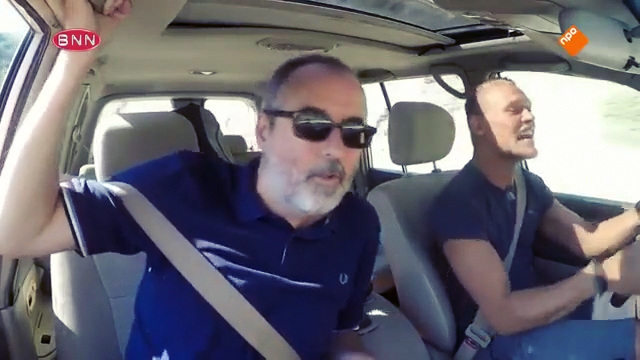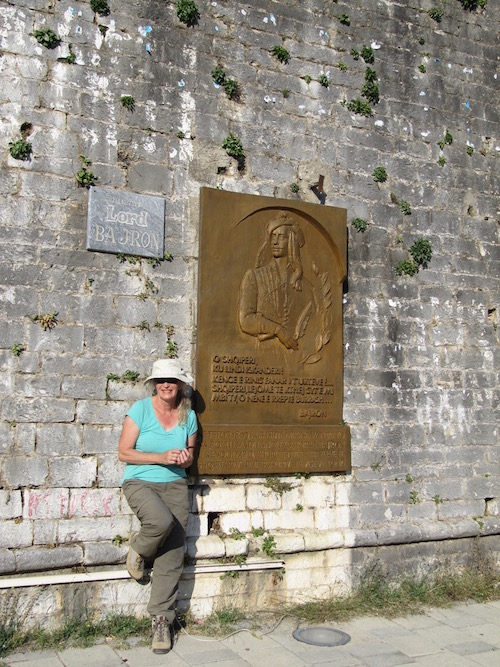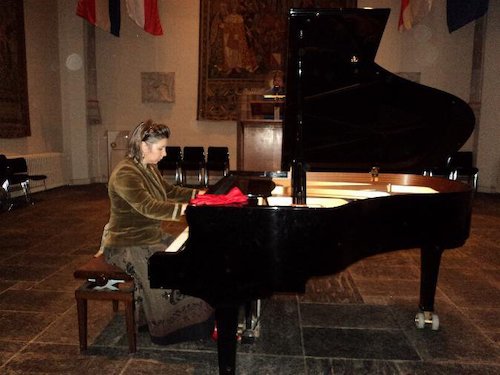Updates
A Ticket System for Government (Or: Let’s Finally Give the Ombudsman Teeth)
The ombudsman, as it stands, is a shark without teeth. It cannot even smell a scandal if it was bleeding before their eyes — can’t sense, can’t bite, can’t act, can’t fix. It’s a watchdog with no jaws. So let’s give it an upgrade or even better give the government such an upgrade that Ombudsman loses the necessity for their entire existence.
This isn’t some grand ideological revolution. It’s just a silly idea for a public ticket system. Silly, but powerful.
Imagine a civic ticket system — not buried in obscure forms, not locked in back-office email chains. Just like an internal help-desk, but for governance. Public, structured, traceable. And smart.
This is what it looks like.
Core Idea
Citizens should be able to report issues publicly — not buried in anonymous inboxes, not hidden behind “ongoing investigation” seals. People already talk about public issues. If people can talk about public issues with their friends, why can’t they track them together too?
A government ticket system could work just like internal systems in IT or customer service — but with a civic twist.
This is not a place for endless debate. It’s a structure to frame problem → proposal → response, cleanly and traceable.
This system proposes a transparent, iterative problem-solving interface where AI is used not to obscure, but to clarify.
The System: Public, AI-Structured, and Transparent
The system is made up of 4 stages — and yes, it uses AI — but only as a tool to help people sharpen what they’re already saying.
Every issue goes through this cycle:
1. Problem Description
a) Citizens submit an issue.
b) The AI cleans up the language, consolidates overlapping inputs, and upgrades the coherence of the report.
c) A public change-log shows the input that evolved the description — all steps visible, all input attributable.
2. Proposed Solution
a) Based on the refined problem description, the AI drafts a solution or possible action path.
b) This is visible to the public as a formal response — no magic, just structured reasoning.
c) This is not a decision. It’s a draft — structured logic, not authority. Only advice.
3. Critique Layer
a) Citizens respond to the proposed solution — a structured challenge to the proposal..
b) Their remarks are also structured by AI — not censored, but upgraded for clarity and grouped by theme or angle.
c) Again, change-logs and input trails are visible. No anonymous edits. No hidden manipulations.
d) in a sense this is the same as step 1 (problem description)
4. Upgraded Solution
a) The AI integrates valid critiques and proposes a refined version of the solution.
b) This is the “feedback-reinforced” stage, where the system attempts synthesis, not endless argument loops.
All stages remain visible — including abandoned tickets, failed resolutions, and ongoing ones. This creates a living public record of issues and proposed governance responses.
This is the synthesis. 1 = 2 + 3 = 4.
Why This Matters
- It forces clarity and traceability. No more vague complaints floating in chaos.
- It turns public input into a collaborative upgrade process.
- It shows which tickets are being handled, stalled, ignored — in plain sight.
- It makes every AI edit accountable, not mysterious.
- It doesn’t replace the ombudsman — it arms them.
Business Model? Sure — But Keep It Public
Yes, this is a product. But no, it shouldn’t be commercialized. This is civic infrastructure. It belongs to the commons.
It could be sold to municipalities, NGOs, or transparency coalitions — but that defeats the purpose.
Build it, release it, and let it run at zero cost. The public has already paid for enough systems that don’t work. This one should.
The value lies not in monetization — but in legitimacy.
Expanded Use: From Complaint Board to Administrative Operating System
What starts as a feedback tool can evolve into a complete civic engine. The system can scale:
- Reported Issue
- Processed Issue (by a public servant or automated filter)
- AI-generated remark on process adequacy (4-stages again)
- Re-open option if resolution was insufficient (4-stages again)
- Cross-department visibility and workflow mapping
- The ticket can go through different departments and the work of each department remains visible.
Each issue flows like a case file, but it’s public-facing and structurally transparent. Departments can adopt the system internally. Citizens and officials see the same state of the case. Updates are traceable.
With enough refinement, this system could even approach pre-judicial arbitration or replace lower-level administrative courts — especially for predictable, repeatable types of disputes (benefits, housing, permit denials, etc.).
At some point a judge and lawyer can then bend over the case after it went through these 3 steps.
Design Philosophy
- Public by default.
- AI-enhanced, not AI-obscured.
- Built around iteration, not resolution-hiding.
- Input is traceable. Reasoning is legible. Logic is public.
- Not built to silence citizens with forms — but to cohere chaos into clarity.
Potential Impact:
If deployed at scale, this would:
- Reduce performative complaint culture (“I ranted online!”) in favor of traceable input.
- Provide oversight journalists and watchdogs with live case data.
- Offer civil servants a way to separate noise from signal.
- Create longitudinal accountability: we’d know what failed, what improved, and why.
- We can track government efficiency through details such as backlog and amount of re-opened cases
Final Thought
Let’s stop treating public concern like noise.
Let’s give it a ticket.
Let’s give the ombudsman jaws.
Give people a way to speak clearly. Let the problems stay visible. Let the fixes be criticized. Let the system evolve in full view.
Democracy doesn’t die in darkness — it suffocates in forms. We’ve normalized arbitrary bureaucracy and opaque complaint systems. But the technology to upgrade them exists. All we’re missing is the will — and the will can be crowd-sourced.
Written by Artorius Magnus
https://tinyurl.com/laconic-utopia World-Peace suggestions @250 articles highschool dropout-autodidact (unofficially 5+ PhD's).
ruim 350 handtekeningen
ik wil jullie allemaal bedanken we hebben binnen een goede 2 weken tijd ruim 350 handtekeningen binnen gekregen! meer dan dat ik had verwacht, morgen gaan we de petitie met de handtekeningen in leveren hopende op een positief geluid van de gemeente! bedankt allemaal! u kunt nog tot morgen 12:00 tekenen mocht u nog familie vrienden buren hebben die niet getekend hebben.
De petitie wordt beeindigd
Beste ondertekenaars,
Heel veel dank dat deze petitie door U, door jou, werd ondertekend. Helaas is het aantal ondertekeningen onvoldoende om deze te kunnen voorleggen aan de Tweede Kamer.
Daar komt bij dat ik heb besloten om met alle openbare activiteiten te stoppen. Dit is een keuze die ik heb gemaakt na veel jaren mij te hebben ingezet voor een nobele munt. Degenen die mij hebben gevolgd weten wat ik met 'nobel' bedoel. Ik ga mij vanaf nu inzetten voor bilaterale betrekkingen in een kleine kring. Hopelijk wordt mijn werk voortgezet door iemand die jonger is dan ik en die dezelfde bevlogenheid heeft om zich in te zetten voor een nobele toekomst.
Jurgens Redczus
7. Transavia geeft toerisme naar Albanië een boost

6 november Dit zijn de cijfers voor het toerisme van Nederland naar Albanië: In 2015: 19.847 bezoekers In 2016: 21.741 bezoekers In 2017 32.150 bezoekers: dit was ook het jaar waarin de vluchten van Transavia op Tirana begonnen. In 2018: 35.943 bezoekers: de opwaartse lijn zet zich voort. In 2019, van januari tot augustus, 30.382. Je mag aannemen dat aan het eind van dit jaar het aantal van 2018 zal zijn overschreden. Dit zijn de aantallen van alle Nederlandse toeristen in Albanië, die natuurlijk niet allemaal met Transavia vlogen.
Maar het is een duidelijke indicatie: in het eerste jaar dat Transavia vloog, steeg het bezoekersaantal met 48%!
Bron: National Tourism Agency
Brief gemeenteraad
Petitie is afgelopen maandag aangeboden aan gemeenteraad en dinsdag heeft omroepflevoland op de radio en TV aandacht besteed aan ons verzoek tot verplaatsing, zie https://www.omroepflevoland.nl/nieuws/175533/tennisvereniging-vraagt-hulp-bij-verhuizing.
6. Op naar de 1000!

5 november. Het gaat gestaag verder naar de duizend ondertekeningen.
Inmiddels is ook het comité van aanbeveling versterkt, met Ronald Giphart, schrijver, die in 2018 meedeed aan het programma De gevaarlijkste wegen van de wereld. Dat was in Albanië, en hij was opgetogen over de Albanese gastvrijheid.

En Tessa de Loo, ook schrijver, die in 1998 haar Varken in het paleis schreef, dat zich afspeelt in Albanië.
Het comité bestaat nu uit:
Mirsa Adami, pianiste;

Daan Everts, oud-hoofd OVSE in Albanië en Kosovo: Ronald Giphart, schrijver die meedeed aan De gevaarlijkste wegen van de wereld in Albanië; Adelina Hasani, concertmeester bij Philharmonie zuidnederland
 Foto: Simon van Boxtel
Foto: Simon van Boxtel
Chris Kijne, journalist bij de Vpro en in 2019 enthousiast teruggekeerd uit Albanië; Tessa de Loo, auteur van Varken in het paleis, dat in Albanië speelt; Sweder van Voorst, ambassadeur voor Nederland in Tirana van 2004-2008
Op naar de 1000!
5 november. Het gaat gestaag verder naar de duizend ondertekeningen.
Inmiddels is ook het comité van aanbeveling versterkt, met Ronald Giphart, schrijver, die in 2018 meedeed aan het programma De gevaarlijkste wegen van de wereld. Dat was in Albanië, en hij was opgetogen over de Albanese gastvrijheid. En Tessa de Loo, ook een schrijfster, die in 1998 haar Varken in het paleis schreef, dat zich afspeelt in Albanië. Het comité bestaat nu uit: Mirsa Adami, pianiste; Daan Everts, oud-hoofd OVSE in Albanië en Kosovo Ronald Giphart, schrijver die meedeed aan De gevaarlijkste wegen van de wereld in Albanië; Adelina Hasani, concertmeester bij Philharmonie zuidnederland Chris Kijne, journalist bij de Vpro en in 2019 enthousiast teruggekeerd uit Albanië; Tessa de Loo, auteur van Varken in het paleis, dat in Albanië speelt; Sweder van Voorst, ambassadeur voor Nederland in Tirana van 2004-2008
Motie is AANGENOMEN!!
Geweldig nieuws dat het nachtnet behouden blijft voor Amersfoort !!! Dank aan alle steunende partijen en ondertekenaars van onze petitie. .